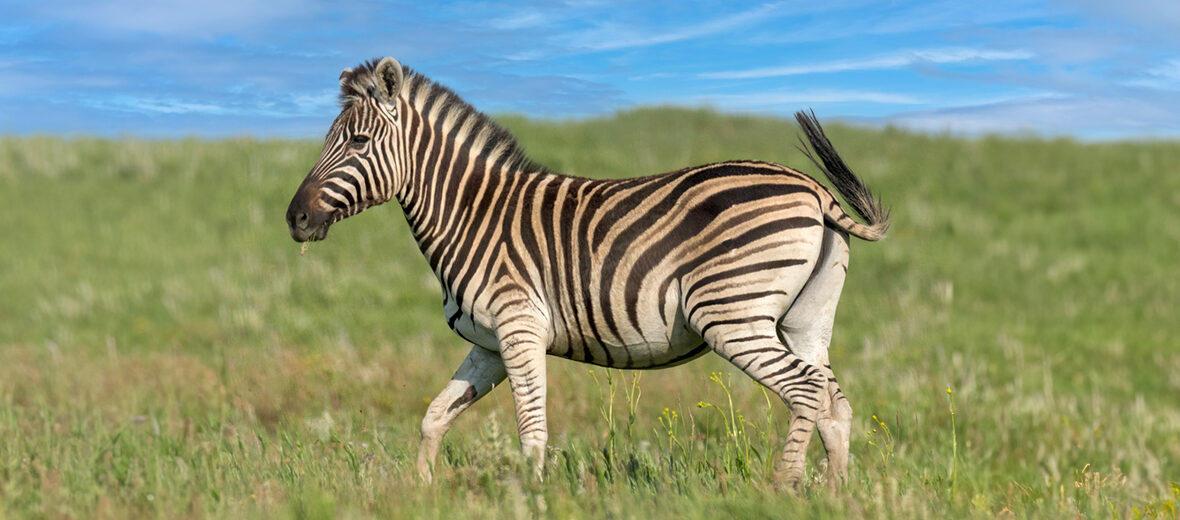
The Chapman’s zebra is a subspecies of the plains zebra and prefers a savannah habitat. They dwell in South Africa. While not necessarily considered a threatened species, the Chapman’s zebra is extinct in Lesotho. They face the threats of habitat loss and destruction at the hands of farming and ranching; hunting; trapping; and climate change, that can cause severe droughts. Their populations are decreasing as well. The IUCN lists these critters as Least Concern.
First the Stats…
Scientific name: Equus quagga chapmani
Weight: Up to 800 lbs.
Length: Up to 97 inches
Height: Up to 52 inches, at the withers
Lifespan: Up to 38 years
Now on to the Facts!
1.) While primarily consuming low-quality grasses, they will also eat fruits, berries, and various leaves.
2.) Cheetahs, lions, leopards, African wild dogs, spotted hyenas, and Nile crocodiles all prey on these zebras.
3.) Chapman’s zebras are considered single-hoofed mammals that are a member of the odd-toed ungulate order.
4.) Seeing as they have to drink frequently, Chapman’s zebras tend to stick close to a water source.
5.) During the wet season, large numbers of herds will gather together to migrate to new sources of food and water.
But wait, there’s more on the Chapman’s zebra!
6.) Chapman’s zebras tend to migrate to areas with a greater amount of food, and will sacrifice quality over quantity.
7.) They display a cyclical daily movement where they prefer grasslands during the day and woodlands at night; thus helping to avoid predation from lions.
Did you know…?
These zebras can run up to 35 mph!
8.) Being highly social animals they live in herds of up to 10,000+ individuals.
9.) To help them avoid the heat of the day, they tend to be more crepuscular (active at dawn and dusk).
10.) Occasionally, a small herd will rush at a potential predator in an attempt to thwart an attack.
But wait, there’s more on the Chapman’s zebra!
11.) While foraging, Chapman’s zebras typically depend on the dominant member of the harem to lead them to food and water.
12.) Typically, males will fight each other in the presence of females in order to win breeding rights.
Did you know…?
Just like other herbivores Chapman’s zebras are susceptible to hydatidosis, a parasitic disease, but it is not often linked as a cause of death. Infected zebras are able to live undiagnosed for many years without detectable symptoms.
13.) Females undergo up to a 12 month gestation (pregnancy) that yields a single foal.
14.) The foal, which is born precocial (self sufficient), is able to walk and keep up with the rest of the herd soon after birth.
15.) Sometimes, males that are members of the harem but not the sire of the foal have been reported to practice infanticide (the intentional killing of a foal not of their own bloodline).
Now a Short Chapman’s Zebra Video!
This video talks about zebras in general.
Be sure to share & comment below! Also, check out the Critter Science YouTube channel. Videos added regularly!
Want to suggest a critter for me to write about? Let me know here.
Some source material acquired from: Wikipedia & IUCN
Photo credit: iNaturalist




